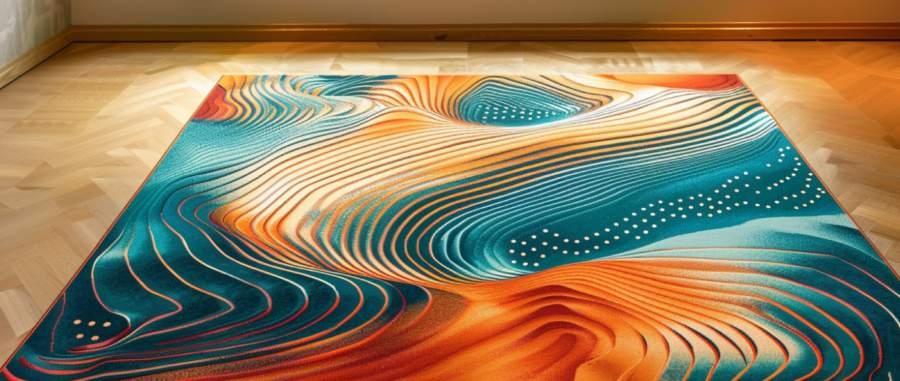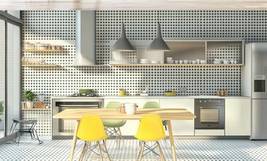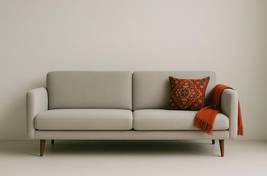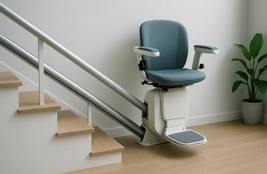Soundproofing Secrets Hidden Beneath Your Feet
 Some people think soundproofing is all about walls and heavy curtains. They overlook the fact that a shocking amount of noise comes from below—footsteps, dropped objects, or the enthusiastic dance routines of the neighbor upstairs. The truth is, your floor can be your best ally in the fight against noise, and the right combination of rugs and pads can make a world of difference.
Some people think soundproofing is all about walls and heavy curtains. They overlook the fact that a shocking amount of noise comes from below—footsteps, dropped objects, or the enthusiastic dance routines of the neighbor upstairs. The truth is, your floor can be your best ally in the fight against noise, and the right combination of rugs and pads can make a world of difference.
Imagine your home as a giant drum. Without something to absorb vibrations, every step, shuffle, and shoe squeak turns into a mini concert you didn’t buy tickets for. Floor coverings interrupt this unwanted performance by absorbing and diffusing sound waves before they bounce around like hyperactive ping-pong balls.
Impact Noise vs. Airborne Noise
It’s worth understanding that there are two main types of noise to combat. Impact noise is the sound of things physically hitting the floor—think heels, dropped keys, or the thud of a cat launching itself off the furniture. Airborne noise is the sound of voices, music, or the muffled television from another room.
Rugs and pads are especially effective at reducing impact noise. They create a cushioned barrier that prevents vibrations from traveling through the floor into other rooms or apartments. While they also help with airborne noise by absorbing echoes, you’ll still need other measures like curtains and wall panels for serious sound control.
Material Choices that Actually Work
Not all rugs are created equal when it comes to silencing a space. Dense, thick materials tend to perform best because they both absorb and dampen sound vibrations.
- Wool: Naturally dense, durable, and excellent at absorbing sound without feeling spongy.
- Cotton: Softer, lighter, and great for smaller spaces, though not as sound-absorbent as wool.
- Shag or High-Pile Rugs: Incredible at killing echoes, though they may trap more dust—so be prepared for extra cleaning.
- Flatweave Rugs: Minimal sound absorption unless paired with a quality pad.
If you’ve been considering a thin decorative rug without a pad, be prepared for it to look nice but work about as hard at sound control as a cardboard cutout of an acoustic panel.
The Magic of Rug Pads
While rugs grab most of the glory, the real soundproofing hero is often the pad underneath. A rug pad adds an extra layer of cushioning that intercepts vibrations before they hit the floorboards. This is especially important in apartment living, where the neighbors below might not appreciate your impromptu tap dance session.
For sound control, look for pads made of dense felt or a felt-rubber combination. Felt provides cushioning and sound absorption, while rubber keeps everything in place. Pads with breathable materials also prevent moisture buildup, which means your floor won’t develop that mysterious “basement smell” even if you don’t have a basement.
Layering for Maximum Silence
If you’re serious about taming the noise, layering isn’t just for fashion. Combining a thick, dense rug with a quality pad underneath can drastically cut down on both echoes and footstep thuds. In high-traffic areas like hallways, kitchens, or living rooms, this combination can make the difference between a pleasant background hum and the constant soundtrack of people stomping around.
Apartments above shops or restaurants can benefit from layering too—blocking out the late-night clatter of chairs being stacked or the rhythmic thump of bass-heavy music drifting up from below. It’s a small investment that can buy back hours of uninterrupted peace.
Practical Setups for Different Spaces
The ideal rug-and-pad setup depends on the type of room and the specific noise you’re dealing with.
- Living Rooms: Large area rugs with felt-rubber pads work best, especially over hardwood or tile. They absorb both footsteps and conversation echoes.
- Bedrooms: Plush wool or high-pile rugs with thick felt pads help create a calm, quiet atmosphere—perfect for sleeping through the neighbor’s early morning blender routine.
- Studios or Workspaces: Combination pads paired with low-pile rugs reduce reverberation while keeping furniture stable for creative work.
- Hallways: Durable, medium-pile runners with non-slip felt pads reduce the drum-like sound of footsteps without becoming a tripping hazard.
For rooms with especially bad echo problems, consider using multiple rugs in strategic areas to break up sound paths. It may look stylish, but the real benefit is a noticeable drop in the “empty gymnasium” effect.
Maintenance Matters
A dusty rug pad is like a clogged air filter—it’s not doing its job properly. Regularly vacuuming both sides of the rug and lifting the pad to clean underneath will keep it functioning at peak performance.
This also extends the lifespan of both rug and pad, as grit and debris won’t grind away at the fibers. It’s a small routine that has a surprisingly big payoff in keeping your home both quieter and cleaner.
Hushing Things Up
Soundproofing your floors doesn’t have to mean turning your home into a recording studio or walking on foam tiles like a cautious acrobat. Rugs and pads are the subtle, practical way to make everyday life less noisy without sacrificing style or comfort.
Once you’ve experienced the difference a well-chosen rug and pad can make, you’ll start to notice just how loud bare floors really are. And when your home becomes a little oasis of quiet, you might even forgive the upstairs neighbor for their questionable dance routines—well, almost.
|
|




 Some people think soundproofing is all about walls and heavy curtains. They overlook the fact that a shocking amount of noise comes from below—footsteps, dropped objects, or the enthusiastic dance routines of the neighbor upstairs. The truth is, your floor can be your best ally in the fight against noise, and the right combination of rugs and pads can make a world of difference.
Some people think soundproofing is all about walls and heavy curtains. They overlook the fact that a shocking amount of noise comes from below—footsteps, dropped objects, or the enthusiastic dance routines of the neighbor upstairs. The truth is, your floor can be your best ally in the fight against noise, and the right combination of rugs and pads can make a world of difference.